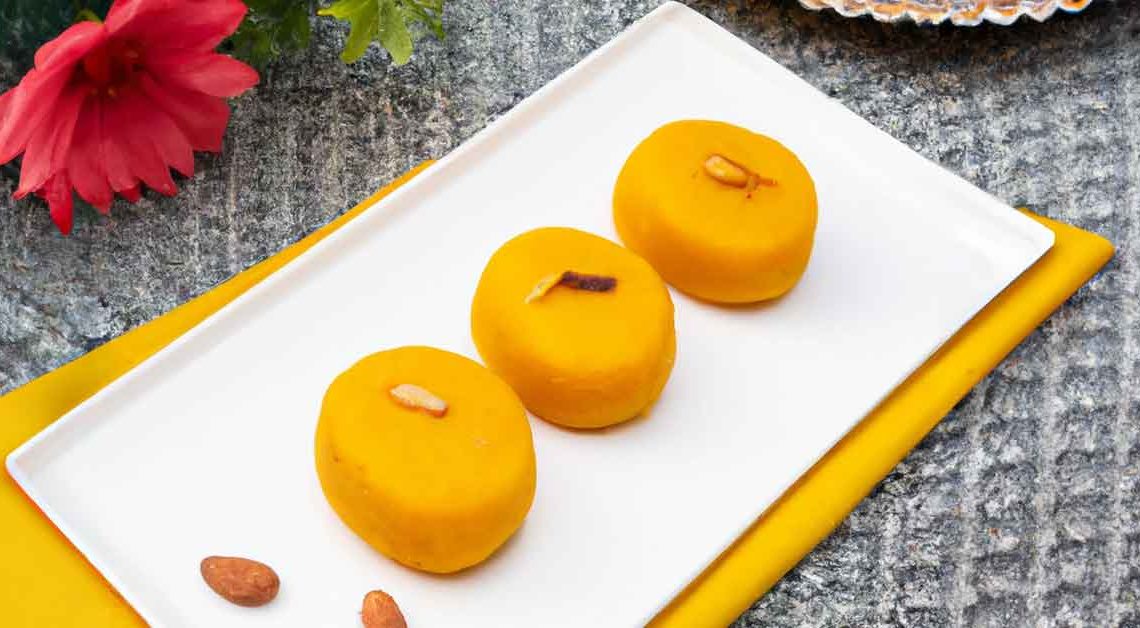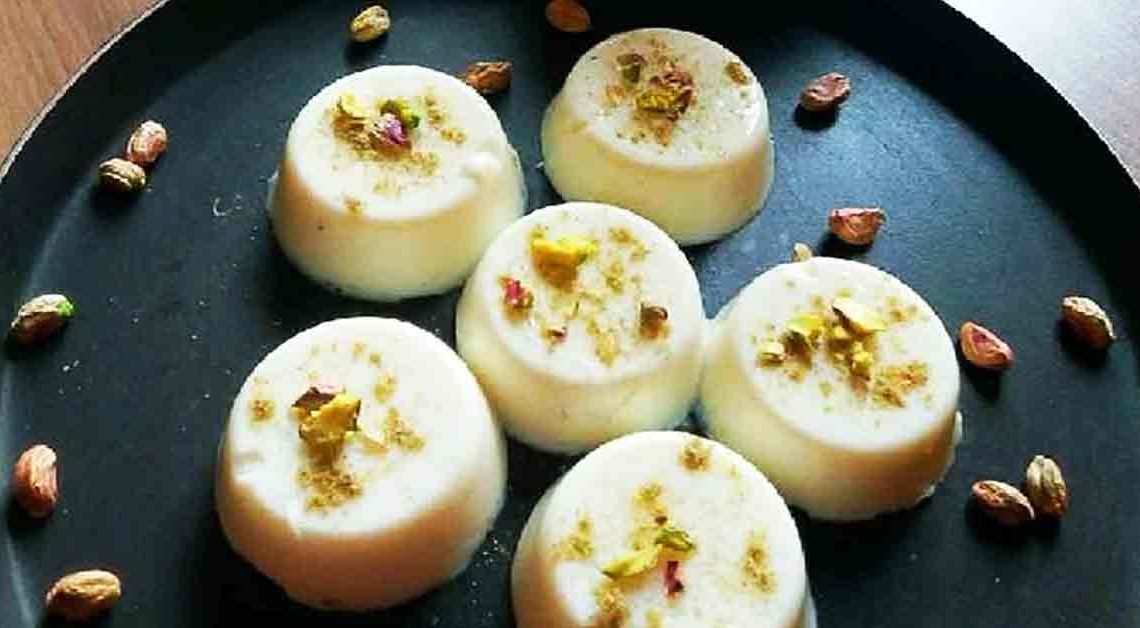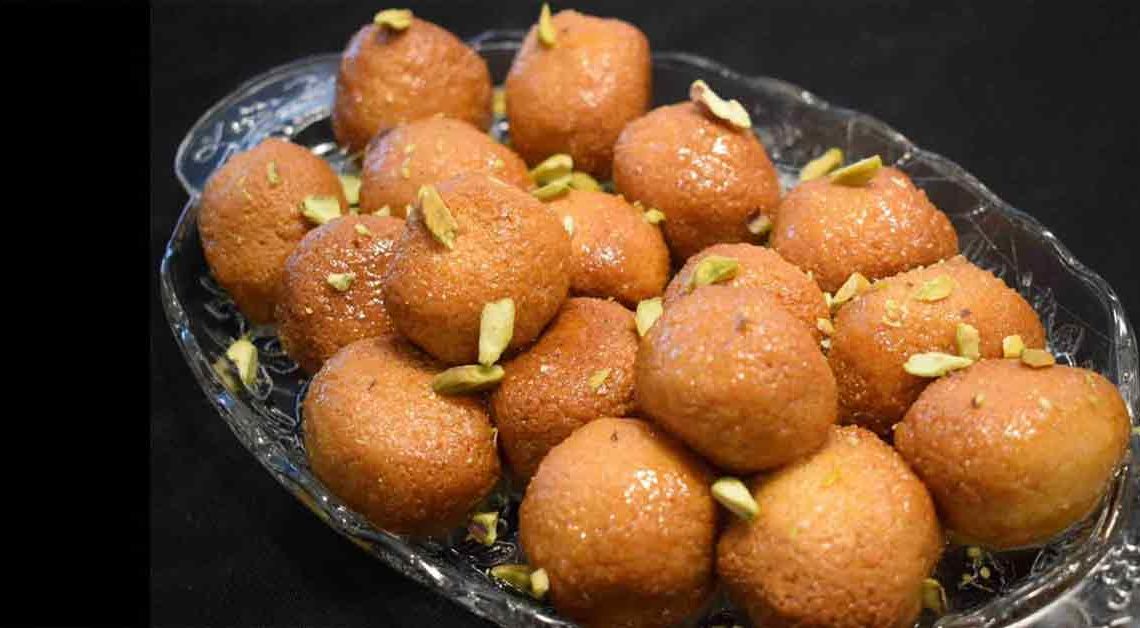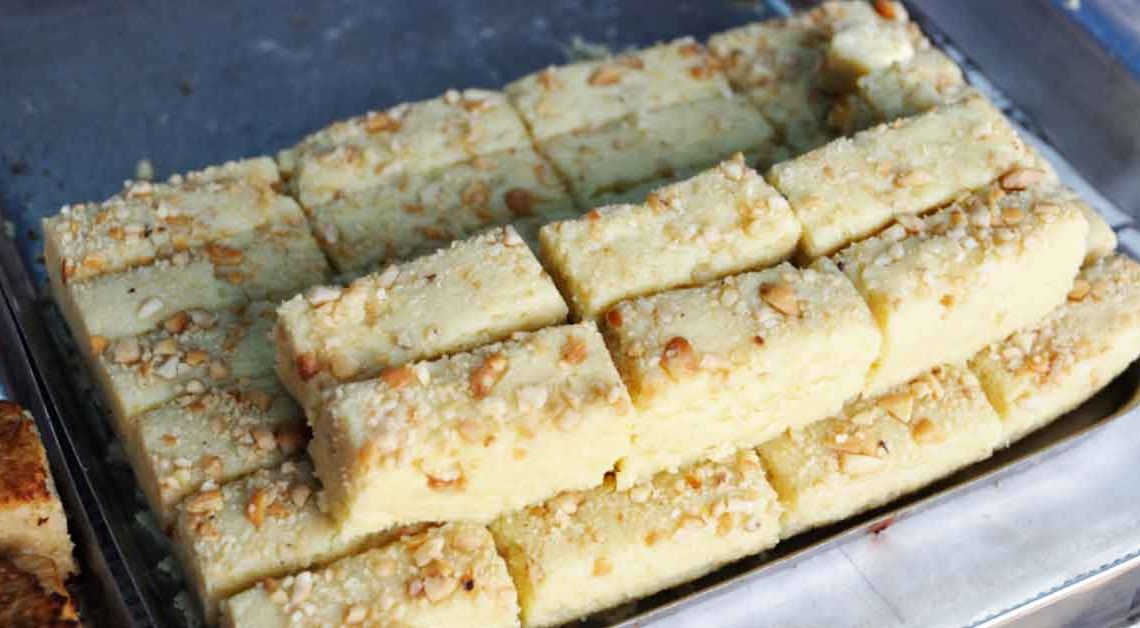Saffron Splendor: Unveiling the Magic of Kesar Kalakand

Welcome to Mithainama world where tradition meets modern indulgence, where the rich heritage of Indian sweets merges with contemporary cravings. Our culinary journey today takes us to the heart of India, where the royal fragrance of saffron and the creamy delight of condensed milk come together in perfect harmony. Say hello to “Kesar Kalakand” – a sweet that’s not just a treat, but a piece of Indian culinary art.
Imagine biting into a luscious square of this dessert, and your taste buds instantly dance to the tunes of saffron’s warm, exotic notes. With a history dating back centuries, Kesar Kalakand is a culinary masterpiece that has captured hearts across generations.
In our food blog, we will embark on a flavorful adventure. We’ll explore the origins and cultural significance of Kesar Kalakand, delve into its sumptuous ingredients that bring this delectable sweet within your grasp. Let’s embark on a culinary journey that transcends time and tradition to captivate your taste buds and nourish your soul.
Origin of Kesar Kalakand
Kesar Kalakand is a delectable Indian sweet with a rich history and a strong connection to the culture and traditions of the Indian subcontinent. Its origins can be traced back to the Indian state of Rajasthan, often referred to as the “Land of Kings,” where culinary artistry is celebrated with great enthusiasm.
The word “kalakand” is derived from two Hindi words, “kala,” which means “thickened milk,” and “kand,” which means “sweet.” Saffron is a highly prized and expensive spice due to its vibrant color, unique flavor, and its association with luxury and royalty. It is often used in various Indian desserts to add a distinctive and indulgent touch.
The traditional preparation involves simmering milk on low heat for an extended period, which causes it to reduce and thicken. This slow-cooking process allows the milk to caramelize, resulting in a sweet, creamy, and slightly grainy texture. The saffron is added for both its rich golden color and its distinct floral and earthy flavor, which elevates the dish to a level of opulence.
History of Kesar Kalakand
Kesar Kalakand, a luscious Indian sweet, has a captivating history that intertwines culinary artistry, tradition, and the royal heritage of the Indian subcontinent. This delectable sweet finds its roots in the state of Rajasthan, known for its rich culinary traditions and royal influences.
History can be traced back to the concept of “doodh ki mithai” or milk-based sweets, which have been a part of Indian cuisine for centuries. However, Kesar Kalakand is believed to have evolved as a regional specialty in Rajasthan, where culinary mastery was a cherished tradition. The word “kalakand” itself signifies “thickened milk” and “sweet.”
Historically, this dish was prepared by simmering milk for hours over a low flame, allowing it to condense and caramelize naturally, resulting in a dense and grainy texture. What sets it apart is the infusion of saffron, often associated with royalty and luxury. The use of saffron, or “kesar,” imparts a unique golden hue and an exquisite flavor, elevating this sweet to a regal treat.
Cultural Significance
Kesar Kalakand holds significant cultural and traditional importance in the Indian subcontinent, symbolizing much more than just a sweet treat. Its cultural significance is deeply rooted in various aspects of Indian society and celebrations:
Festivals and Special Occasions: It is a staple during Indian festivals and special occasions. It is often prepared and shared during Diwali, Raksha Bandhan, Holi, and other festive celebrations. Its presence signifies the festive spirit and the importance of sharing joy and sweetness with loved ones.
Religious Offerings: In many Indian traditions and religious rituals, sweets play a pivotal role. Kesar Kalakand is often offered to deities in temples and at home as a form of prasad (sacred food offering). It symbolizes devotion and gratitude.
Aesthetic Appeal: The use of saffron gives it a vibrant golden color, which is considered an auspicious and luxurious hue in Indian culture. This makes the sweet visually appealing and enhances its cultural significance.
Where is Kesar Kalakand Famous?
Kesar Kalakand is famous and beloved throughout India, but it has particularly strong associations with certain regions and cities where it has gained widespread recognition and popularity. Some of the places where it is especially renowned include:
Rajasthan: Kesar Kalakand has its origins in the state of Rajasthan. It is an integral part of the state’s rich culinary heritage and is closely associated with the culture and traditions of Rajasthan. Cities like Jaipur, Jodhpur, and Udaipur are well-known for their delicious dessert.
Mathura and Vrindavan: These holy cities in the state of Uttar Pradesh are famous for their sweet shops and dairy products and often prepared with the region’s high-quality milk, is a specialty and a must-try for visitors.
Delhi: The capital city of India, Delhi, has a thriving sweet market, and is a popular choice among its diverse population. It is readily available in the city’s sweet shops and is often served at weddings and celebrations.
Interesting Facts and Trivia
Kesar Kalakand is a delightful Indian sweet with a rich history and cultural significance. Here are some interesting facts and trivia related to this delectable dessert:
- It is believed to have been a favorite of Indian royalty, including the Mughal emperors. Its use of saffron, known as the “king of spices,” contributes to its regal association.
- It is a popular sweet during Indian festivals, especially Diwali. Its golden color and rich taste make it a symbol of celebration and joy.
- It can be served in various forms, including as squares, rolls, or as part of a layered dessert. It’s often garnished with slivered almonds, pistachios, and a touch of edible silver foil (varak).
- Saffron, a key ingredient in Kesar Kalakand, is known for its potential health benefits, including being a source of antioxidants and having mood-enhancing properties.
- The natural sugars can provide a quick energy boost, making it an ideal treat for a midday pick-me-up or to recharge after physical activities.
Did You Know?
Kesar Kalakand, in addition to its sumptuous taste, offers several health benefits when consumed in moderation:
- Kesar (saffron), a key ingredient in Kesar Kalakand, has been used in traditional medicine for its potential health benefits. Saffron is believed to possess antioxidant properties and may aid in promoting good digestion and maintaining overall well-being.
- It is made from condensed milk, which is a good source of calcium. Calcium is essential for strong bones and teeth, making this sweet an indulgence with potential bone-boosting benefits.
- Saffron has been associated with mood enhancement and may have positive effects on mental well-being. Consuming it could contribute to a sense of happiness and contentment.
- In Ayurveda, an ancient system of medicine, saffron is sometimes recommended for its potential aphrodisiac qualities and for maintaining hormonal balance.
- Beyond its nutritional benefits, the act of sharing during festivals and special occasions fosters a sense of togetherness, joy, and cultural appreciation, contributing to overall happiness and well-being.







